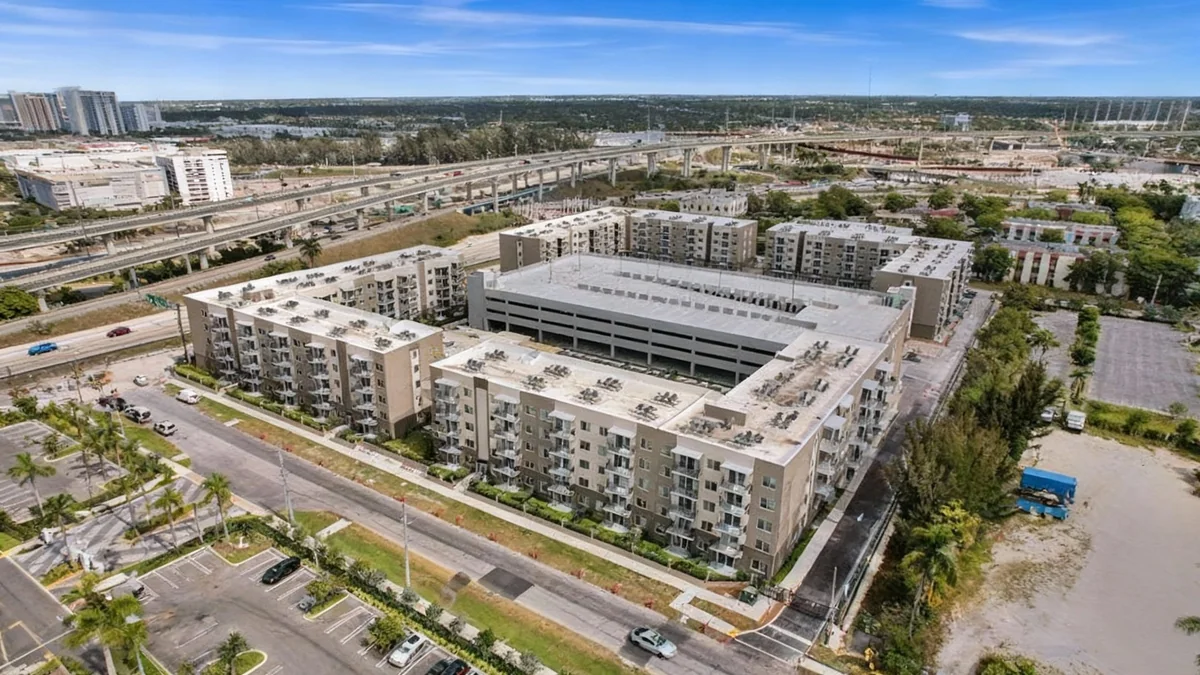Top executives from PIMCO Prime Real Estate, Blackstone, and AXA IM convened in London to discuss the future of real estate investing. The panel, held at the Bloomberg Women, Money & Power 2025 event, focused on how geopolitical tensions, evolving trade dynamics, and uncertain demand for office space are fundamentally reshaping investment strategies across the globe.
The discussion provided a high-level overview of the challenges and opportunities facing institutional investors. Panelists shared insights on which property sectors are showing resilience and how capital allocation is adapting to a new economic environment marked by inflation and higher interest rates.
Key Takeaways
- Global geopolitical shifts are now a primary factor in real estate investment decisions, impacting supply chains and market stability.
- The office sector faces a period of significant change, with a clear divergence between high-quality, modern buildings and older, less desirable properties.
- Sectors like logistics, data centers, and life sciences continue to attract strong investor interest due to durable, long-term demand drivers.
- Investors are increasingly focused on assets with strong fundamentals, such as pricing power and high occupancy rates, to navigate economic uncertainty.
Geopolitical Tensions Reshaping Investment Maps
A central theme of the discussion was the growing impact of geopolitics on real estate. Isabelle Scemama, Global Head of Alts at AXA IM, noted that factors beyond traditional market analysis are now critical for long-term investment planning.
"We can no longer look at a market in isolation. Supply chain resilience, trade relationships, and regional stability are now at the forefront of our due diligence. The diversification of manufacturing, often called 'nearshoring' or 'friend-shoring,' is creating new logistics hubs and industrial real estate opportunities in places like Mexico and Eastern Europe."
This sentiment was echoed by the other panelists, who agreed that a globalized world requires a more nuanced approach to risk. The conversation highlighted that capital is becoming more selective, favoring markets with predictable regulatory environments and stable political landscapes. This shift affects not just where to invest, but also what types of properties are most attractive.
What is 'Nearshoring'?
Nearshoring is the business practice of moving manufacturing or other operations to a nearby country from a more distant one. This trend has accelerated due to recent global supply chain disruptions, creating new demand for industrial and logistics real estate in strategically located regions.
The Great Divide in the Office Sector
The future of the office building was a topic of considerable debate. Kathleen McCarthy-Baldwin, Global Co-Head of Real Estate at Blackstone, emphasized that the narrative of the "death of the office" is too simplistic. Instead, she described a market that is splitting into two distinct tiers.
"There is a clear flight to quality," McCarthy-Baldwin stated. "Companies are using their office space as a tool to attract and retain top talent. This means they are demanding modern, sustainable buildings with excellent amenities in prime locations. These top-tier assets are performing well. The challenges are concentrated in older, B and C-class buildings that no longer meet tenant expectations."
Annette Kröger, CEO Europe for PIMCO Prime Real Estate, added that sustainability is a key differentiator. Buildings with high ESG (Environmental, Social, and Governance) ratings are commanding premium rents and are more likely to retain value.
She explained that regulatory requirements and corporate climate pledges are making green-certified buildings a necessity rather than a preference. This trend is creating opportunities for investors to acquire and upgrade older properties to meet modern standards.
Office Market Statistics
According to recent market analysis, vacancy rates for Class A office space in major global cities are, on average, 40% lower than those for Class B and C properties. This data supports the panelists' view of a widening performance gap within the office sector.
Sectors Fueled by Structural Demand
While the office market undergoes a transformation, other real estate sectors are benefiting from powerful, long-term trends. The panelists were unanimous in their positive outlook for logistics, data centers, and life sciences real estate.
Logistics and E-commerce
Blackstone's McCarthy-Baldwin pointed to the continued growth of e-commerce as a primary driver for logistics warehouses. "The demand for last-mile delivery centers and modern logistics facilities is structural. Even as online sales growth normalizes, the baseline is significantly higher than it was pre-pandemic, and that requires a robust physical infrastructure," she said.
The Digital Economy's Backbone
Isabelle Scemama of AXA IM highlighted the explosive growth in data consumption. She noted that the rise of artificial intelligence, cloud computing, and streaming services is creating unprecedented demand for data centers.
"Data centers are the essential infrastructure of the digital economy. They are a highly specialized asset class with significant barriers to entry, offering attractive, long-term returns for institutional investors who understand the operational complexities."
Innovation in Life Sciences
PIMCO's Annette Kröger discussed the resilience of the life sciences sector. She explained that demographic trends, such as aging populations, and consistent funding for research and development create stable demand for specialized lab and R&D facilities.
"Life sciences real estate is often clustered around major universities and research institutions, creating ecosystems of innovation," Kröger noted. "These are long-term investments tied to the advancement of science and medicine, making them less correlated with broader economic cycles."
Navigating an Uncertain Economic Climate
The conversation, moderated by Bloomberg's Dani Burger, concluded with a look at the broader economic environment. With higher inflation and interest rates, the panelists agreed that the era of easy capital has ended. This new reality places a premium on operational expertise and careful asset selection.
Investors are now focused on properties that can generate consistent cash flow and have the ability to increase rents to keep pace with inflation. "Pricing power is paramount," stated McCarthy-Baldwin. This means focusing on sectors with high demand and limited new supply.
Ultimately, the discussion at the London event painted a picture of a real estate market in transition. While new challenges from geopolitics and changing work habits have emerged, durable trends in technology and logistics continue to create compelling opportunities for disciplined and well-informed investors.





